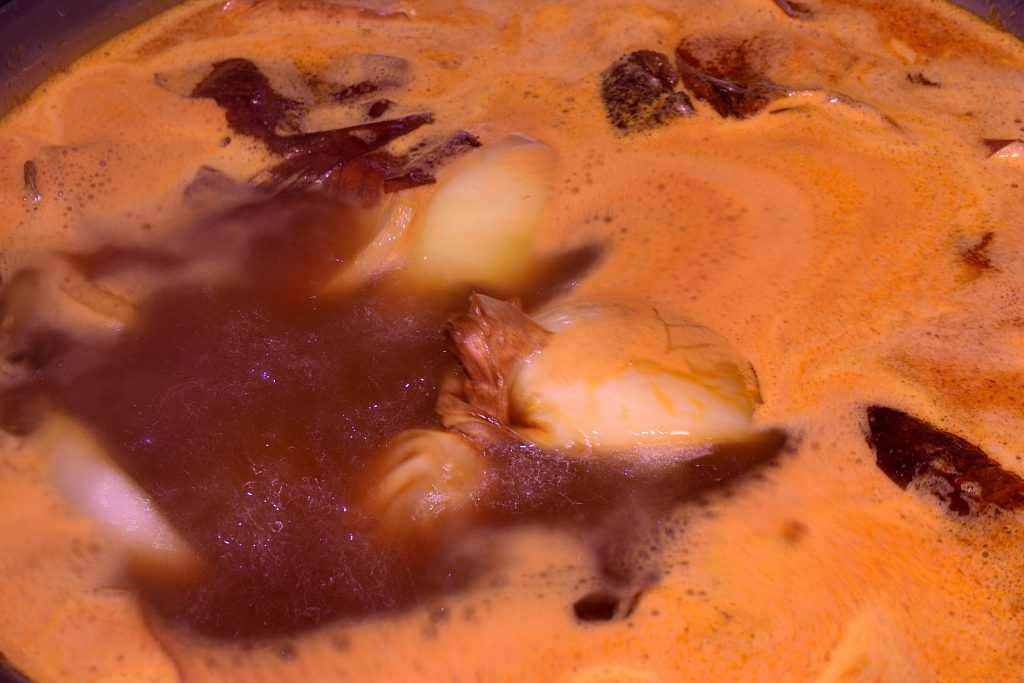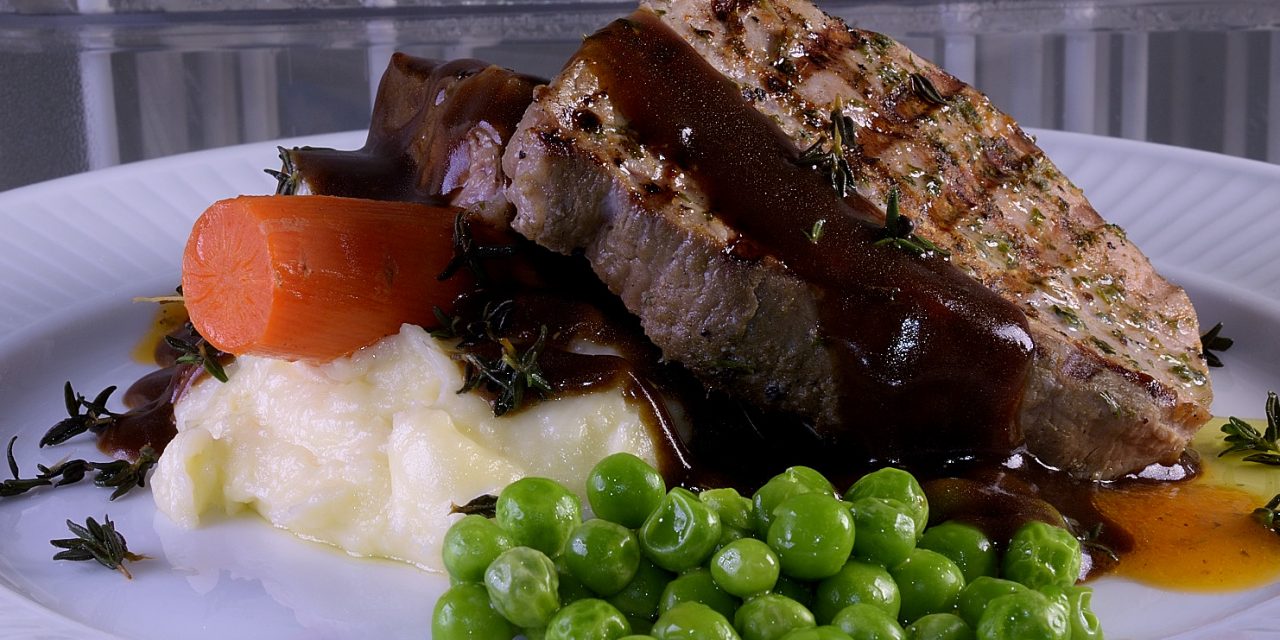
Don’t believe your eyes…of round…
The eye of round looks inviting. The shape is uniform. Very little trimming is required. It looks pretty much like a whole filet/tenderloin, just waiting to be cut into steaks. But as we discussed in the article about New Yorks and rib eyes, selecting steaks on the basis of general appearance can backfire. For lack of a less jargonistic way of saying it, some of the ugliest cuts of meat make for some of the best eatin’. If we define “steak” as a cut of meat that is inherently tender, eye of round is no steak.

The eye of round is part of a group of three muscles that correspond anatomically to our own thighs. We know these muscles are strong, they support a lot of weight. Just like a steer, we have an inside/top round, an outside/bottom round and the eye of the round. On a human, that inside round is right where it says it is. On the inside of the thigh. And so it is with the outside round–it’s on the outside of our thighs. But where is the eye? The eye is that muscle on the underside that athletes grab at when they suffer a “hamstring” injury.
You see jocks limping in spastic agony, grabbing at that muscle and the surrounding tendons behind. It’s easy to relate–most of us have strained or cramped that muscle running, walking, swimming, SLEEPING or doing one or another of the ungodly exercises that doctors keep telling us we had better do or die young. Not sure which is worse. But I digress.

Magic always has a caveat
There is a reason that eye of round is inexpensive–it just doesn’t have the same characteristics as higher priced cuts. It bears a lot of weight but doesn’t actually move around much. This results in low levels of myoglobin, making the cut pale and dry compared to active muscles like chuck or brisket. It cannot be made to approximate prime rib or a rare steak. Even at the low temperatures utilized by sous vide, the distinctive pink color is bound to degrade by the time tenderization is achieved. Using as low a temperature as possible will at least minimize the loss of moisture.
What does the rest of the world do with eye of round? Well, you can skip the cooking process altogether and cure the meat into Italian Bresaola, the bovine equivalent of prosciutto. We have a recipe for that HERE. The collagen remains, but so much moisture is removed as a result of the drying process that the end product is tender as long as it is sliced paper thin. This is a long and arduous process–even longer than sous vide. Most of us scratch it off the list right away. But there is still hope for our bargain basement beef!
Dealing with it
Ultimately, what appears to be a problem is actually an opportunity. After proper sous vide processing, the eye of round will definitely be tender. Sous vide is dependable in that respect. What it ends up getting used for is where a little creativity is required. We’ll get to that.

Usually 7-8 lbs/4-5 Kg. 
Set aside trim to make sauce. 
4 pieces, very little marble. 
Preheat the bath to 130 F/54 C. 
Vacuum seal the roast(s) in heat rated bags
Preheat the bath to 130 F/54 C. Process for a minimum of 48 hours. Don’t be afraid to go as long as 72, and use the pinch and poke method to evaluate texture/tenderness.
Notes: People familiar with my work know that I rarely introduce salt or other substances into the sous vide bag. There is a reason for that, explained in detail HERE. Salt (in the form of sodium ions) can penetrate the surface of the meat, but the process is slow and you will end up with more salt in the bag than in the meat. If you clarify the juices in the bag to use in sauce making, be prepared for them to retain most of the salt that you added.
Utilize the trim to make brown stock while you wait:
Brown stock
Ingredients:
Beef trim, approximately 24 oz/700 g.
Carrots, 1 each, cut coarsely (do not peel).
Celery, 4 stalks, cut coarsely.
Onions, 1 each, cut coarsely (do not peel).
Tomato paste, 6 oz. can plus 6 oz red wine or 12 oz can of tomato sauce.

Add meat to 250 F pan. 
Brown well. 
Add celery and carrots. 
Continue browning. 
Add onions. 
Brown well. 
6 oz tomato paste/6 oz wine. 
Continue browning. 
Reduce until very “dry.” 
Add 2 qt./2 L water. 
Simmer for 2 hours, reduce by half.
Absolution

Strain through colander. 
Clarify as per HERE
This 1 quart result is full-bodied and purposefully devoid of salt at this stage. You can season and thicken it to your liking or simply fortify it with one of the many pre-thickened sauce base concentrates available at the market or online. Knorr makes a pretty good one. If, instead, you continue reducing the clarified stock to about 4 oz/120 ml, it will turn to syrup as seen below–it will not require seasoning because there is a certain amount of naturally occurring salt in the beef trim. I do both of those things.

The Pot Roast Route

How to get there

Harvest the juices, set aside. 
Dust with powdered egg white. 
Mist with water. 
Roll in desired seasonings. 
Drizzle or spray with oil. 
Sear in pan on all sides.
Slice and serve!

The Swiss Steak Circuit

Chill and slice thick. 
Dust with egg white powder. 
Mist with water. 
Sprinkle with seasonings. 
Mist or drizzle with oil and grill.
The term is really “Swissed Steak,” meaning pounded and even needled, and this is not that. It’s just a thing. It’s easy. It’s pretty good.

The Cold Cut Course

The Shredded Approach

Seared with a little chopped garlic; tossed with marinara, a little butter, shaved Reggiano!
Norm
Be sure to visit us in real time on Facebook at https://www.facebook.com/groups/272128179509149










